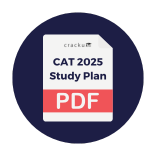Read the following scenario and answer the THREE questions that follow.
During the floods of 2018-2019, a group of philanthropists led by Niyabuddin, wished to open free food centre for the needy. Their motto was that “no human should be hungry.” Nothing gives more satisfaction to the philanthropists than to see the hungry eat to the fullest.
Post Covid-19, the group started a food centre by the name Win Borne Life Care Food (WBLCF) in a small town called Palakkad. The centre started gaining popularity as the number of people enjoying free meals increased over time. Initially, WBLCF offered a standardized menu consisting of idli, upma, puttu for breakfast, curd rice for lunch, and idli or upma for supper. Six women were employed by WBLCF to prepare all the meals. As the number of diners increased, they started expecting a variety in the menu. At WBLCF, not all the diners eat "free": while two-thirds of diners get free food, one-third would donate some amount to a transparent charity box kept at the entrance. For example, a man donated Rs. 500 after consuming two idlis, and a woman approached Niyabuddin and inquired about donating 10 kilogrammes of rice. Those who could not afford to donate, were often seen prostrating worshipfully in front of the charity box. Some caring individuals made monetary donation while others donated rice, fruits and vegetables to WBLCF. Further, the centre received enquiries from many locals on how they could contribute to the cause.
As the centre was lauded for its philanthropic work by people of the town, Niyabuddin intended to replicate the initiative in the nearby districts. However, he is concerned about the cost that goes into running the centre. Almost 75 percent of the donated amount goes into buying the cooking ingredients, while the rest goes into paying salaries, operations and maintenance costs.
Niyabuddin realised that on some days the food was wasted while on other days diners went back hungry. He sought advice from a consultant friend on how to reduce wastage. The consultant suggested the following:
1. Launch a mobile app so that diners can pre-inform their arrival to WBLCF.
2. Ask diners who enjoy free meal to distribute excess food to hungry on streets
3. Ask diners to eat less as it is good for health
4. Preach people to eat less
5. Ration amount of food to be served to the diners
Which of the above ideas will not be consistent with the core ethos of
WBLCF?
The correct option is B.
Suggestion 3 goes against the core ethos of WBLCF, which focuses on providing meals to the needy without imposing restrictions on their food intake. Encouraging diners to eat less may contradict the principle of ensuring that everyone has enough to eat.
Suggestion 4 is similar to Suggestion 3. Preaching people to eat less is not aligned with the ethos of WBLCF, which is centered around addressing hunger rather than promoting dietary restrictions.
Suggestion 5 may also contradict the mission of WBLCF. While rationing may be a practical approach to reduce wastage, it could conflict with the principle of providing enough food for those who are hungry. Imposing strict limits on the amount of food served may contradict the mission of ensuring that "no human should be hungry."




